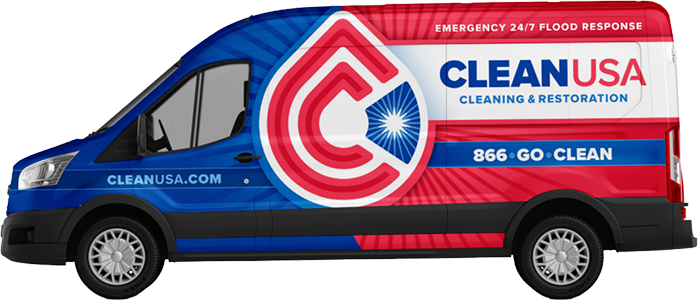When faced with the aftermath of a flood, it is crucial to know how to effectively clear water from your property. This article will provide step-by-step guidance on the necessary safety measures, documentation for insurance claims, cleaning and disinfecting products, structural considerations, drying techniques, and early detection and treatment of mold and mildew. By following these steps, you can ensure a thorough and efficient cleanup process after a flood.
Key Takeaways:
- Clearing water after a flood requires specific safety measures to be taken.
- Proper documentation of flood damage is essential for insurance claims.
- Using appropriate cleaning and disinfecting products is crucial for effective cleanup.
- Drying techniques and equipment are important in preventing mold growth and further damage.
- Early detection and treatment of mold and mildew are necessary to prevent health risks and property damage.
Initial Safety Measures Before Water Removal
Before beginning the process of water removal, it is crucial to prioritize safety. Taking the necessary precautions can help ensure a safe environment during the cleanup process. Here are some initial safety measures that should be taken:
- Shutting off the gas and electricity: To minimize the risk of accidents, it is important to shut off the gas and electricity supply to the affected area. This will help prevent potential hazards and ensure the safety of those involved in the cleanup.
- Wearing appropriate protective gear: During flood cleanup, it is essential to wear protective gear to minimize contact with potentially harmful substances. This includes wearing gloves, boots, goggles, and face masks to protect against potential hazards such as contaminated water, mold, and other harmful materials.
The image above showcases the importance of wearing protective gear during flood cleanup to ensure personal safety.
By following these initial safety measures before water removal, you can significantly reduce the risk of accidents and create a safer environment for the cleanup process.
Documenting Damage for Insurance Claims
Proper documentation of flood damage is crucial when filing insurance claims. To ensure a smooth process, it is essential to document the damage thoroughly. Start by taking clear and detailed photos or videos of the affected areas before you begin the cleaning process. This documentation will serve as critical evidence of the extent of the damage and will support your insurance claim.
When capturing images or videos, focus on the areas most affected by the flood, such as rooms, furniture, appliances, and personal belongings. It is important to provide a comprehensive visual record of the damage. Remember to include close-up shots to highlight specific damages, as well as wide-angle shots for context.
In addition to visual documentation, it is equally important to keep thorough records of all expenses related to flood damage. This includes invoices, receipts, and any other relevant documents. Keeping a detailed record of expenses will help you accurately calculate the total cost of the damage and provide the necessary information for your insurance claim.
By documenting the damage through photos, videos, and records of expenses, you’ll be equipped with the evidence needed to support your insurance claim. This documentation is crucial for successful reimbursement and ensures that you receive the compensation you deserve for the flood damage expenses.
Essential Cleaning and Disinfecting Products
Cleaning and disinfecting are crucial steps in the flood cleanup process. To effectively remove contaminants and ensure a safe living environment, it is essential to use the right cleaning and disinfecting products. Here are some essential products that should be utilized for flood cleanup:
- Household cleaners: Use household cleaners specifically designed for flood damage. These cleaners are formulated to remove dirt, debris, and bacteria effectively. Choose a cleaner suitable for the specific surfaces in your home, such as tile, wood, or laminate.
- Disinfectants: Disinfectants play a vital role in eliminating disease-causing microorganisms carried in floodwater. Look for disinfectants that are registered with the Environmental Protection Agency (EPA) and have effectiveness against a broad spectrum of pathogens.
- Bleach: Bleach is an effective disinfectant for non-porous surfaces. It can kill bacteria, viruses, and fungi. Prepare a bleach solution by mixing 1 cup of bleach with 1 gallon of water. Remember to follow the manufacturer’s instructions and wear appropriate protective gear when using bleach.
- Antimicrobial sprays: Antimicrobial sprays are designed to inhibit the growth of mold and mildew. These products can be applied to surfaces prone to mold growth, such as walls and ceilings, to prevent future mold infestations.
- Gloves and masks: When using cleaning and disinfecting products, it is crucial to protect yourself. Wear gloves to protect your hands from chemicals and pathogens. Additionally, wear a mask to prevent inhalation of airborne contaminants.
Using suitable products for different surfaces is essential to ensure effective cleaning and disinfection. By utilizing these essential cleaning and disinfecting products, you can minimize health risks and restore your home after a flood.
How Do You Clear Water After a Flood?
After a flood, it is crucial to promptly clear water from your property to prevent further damage and facilitate the drying process. There are several effective techniques and methods that can be used to remove standing water. The goal is to ensure thorough water removal and create a safe environment for the subsequent restoration process.
One common method is to use pumps to extract the water. Submersible pumps can be placed in the flooded area and used to pump out the water. These pumps are designed to handle large volumes of water and can be quite efficient.
Another option is to use high-capacity wet/dry vacuums. These vacuums are specifically designed for water removal and can quickly suck up standing water from various surfaces. They are portable and easy to use, making them a popular choice for homeowners.
If you don’t have access to pumps or wet/dry vacuums, you can resort to manual methods such as using buckets or mops to remove the water. This method may be more time-consuming and physically demanding, especially if the area is large, but it can still be effective.
Once the water has been cleared, it is essential to properly dispose of it in accordance with local regulations and guidelines. Avoid draining the water into the sewage system or bodies of water, as it can contaminate the environment. Instead, consult with your local authorities for proper disposal methods and locations.
Clearing water after a flood is a crucial step in the cleanup process. It is essential to implement effective water removal techniques to minimize damage and promote a successful restoration process. By using pumps, wet/dry vacuums, or manual methods, you can ensure thorough water removal, making way for a faster and more efficient recovery.
Structural Considerations and Material Disposal
After successfully removing the water, it is essential to address the structural considerations that may have been affected by the flood. Inspecting and assessing the extent of the structural damage is crucial to determine the necessary actions for restoration.
During the inspection, pay close attention to the foundation, walls, floors, and ceilings for any signs of structural compromise. Look for cracks, shifts, or sagging that may indicate damage and consult a professional if necessary. It is important to ensure the safety and integrity of the property before proceeding with any repairs or renovations.
Once the structural assessment is complete, it may be necessary to remove interior wall finishes and insulation that have been water-damaged. This will not only prevent the potential growth of mold and mildew but also facilitate the drying process and subsequent restoration.
Handling damaged materials is another crucial aspect of post-flood cleanup. Materials that have been contaminated by floodwater should be disposed of properly to prevent further contamination or health hazards. Follow local regulations and guidelines for the safe disposal of affected materials, such as carpets, furniture, drywall, and insulation.
Remember to take necessary precautions when handling damaged materials, such as wearing protective gloves, masks, and goggles. This will protect you from potential hazards and ensure your safety during the cleanup process.
By addressing the structural considerations and properly handling damaged materials, homeowners can effectively restore their property and prevent further damage after a flood.
Effective Drying Techniques and Equipment Use
Drying the affected areas thoroughly is crucial in preventing mold growth and further damage. By implementing effective drying techniques and utilizing appropriate equipment, you can expedite the drying process and ensure the complete restoration of flood-damaged areas.
One of the key tools in the drying process is the use of dehumidifiers. These devices work by extracting moisture from the air, reducing humidity levels and aiding in the evaporation of water from surfaces. Place dehumidifiers strategically in the affected areas to maximize their effectiveness.
Alongside dehumidifiers, the utilization of fans can significantly speed up the drying process. Fans help to circulate air, increase airflow, and facilitate evaporation. Position fans strategically to create a cross-ventilation system that directs air towards wet areas.
In addition to dehumidifiers and fans, proper ventilation is crucial for effective drying. Open windows and doors to promote airflow, especially in areas with limited ventilation. This will help to remove excess moisture and encourage the evaporation process.
The total drying time for flood-damaged areas varies depending on several factors, including the extent of the water damage, the materials involved, and the ambient conditions. It is important to exercise patience and thoroughness during the drying process, as rushing can lead to incomplete drying and potential mold growth.
To ensure the effectiveness of the drying techniques, periodically monitor the moisture levels in the air and the affected surfaces. You can use moisture meters or hygrometers to measure the humidity levels and track the progress of the drying process.
By following these effective drying techniques and utilizing dehumidifiers, fans, and proper ventilation, you can achieve a thorough and efficient drying process after a flood. Remember to allow sufficient time for complete drying to minimize the risk of mold growth and further damage to your property.
Identifying and Treating Mold and Mildew Early
Mold and mildew can quickly develop in a post-flood environment, posing health risks and further damage to the property. It is crucial to identify and treat mold and mildew early to prevent their spread and mitigate potential hazards.
Early detection is key when it comes to mold and mildew. Regularly inspect your property for signs of mold growth, such as a musty odor, visible spots, or discoloration on walls, ceilings, or furniture. Additionally, pay attention to any respiratory symptoms or allergic reactions that may indicate mold exposure.
If you suspect mold or mildew, take prompt action to treat and prevent their spread. Start by drying the affected area thoroughly and eliminating any excess moisture. Use dehumidifiers and fans to improve air circulation and reduce humidity levels. Additionally, consider using mold and mildew cleaners or natural remedies like vinegar or hydrogen peroxide to remove visible growth and disinfect the area.
Preventing mold growth after a flood is also essential. Ensure proper ventilation in your home and control humidity levels to discourage mold spores from thriving. Address any water leaks or moisture issues promptly, and consider using mold-resistant materials for renovations or repairs.
By identifying and treating mold and mildew early, you can protect your property and the health of its occupants. Take proactive measures to prevent their growth and seek professional help if necessary. Remember, the key to dealing with mold and mildew is early detection and prompt action.
Conclusion
In conclusion, effectively clearing water after a flood requires a systematic approach that prioritizes safety, thorough documentation, appropriate cleaning and disinfection, structural considerations, and early detection of mold and mildew. By following these essential steps, homeowners can navigate the challenging process of water removal and restoration with confidence.
The first step is to ensure safety by shutting off the gas and electricity before beginning the water removal process. Wearing protective gear is also crucial to minimize the risk of accidents during cleanup.
Proper documentation is essential for insurance claims, which is why it is important to document the damage by taking photos or videos before cleaning. Keeping records of all expenses related to flood damage is also crucial for filing an insurance claim.
When it comes to cleaning and disinfection, using appropriate products for different surfaces is vital. This ensures effective elimination of disease-causing microorganisms carried in the floodwater.
Thorough water removal is essential to prevent further damage and facilitate drying. Various techniques, such as using pumps, vacuums, or buckets, can be employed to clear standing water.
Structural considerations and proper disposal of damaged materials are necessary after water removal. Inspecting and assessing structural damage, as well as safely disposing of materials contaminated by floodwater, help ensure the safety and integrity of the property.
Effective drying techniques, including the use of dehumidifiers, fans, and proper ventilation, are crucial to prevent mold growth and further damage. Patience and thoroughness are key in achieving complete drying.
Lastly, early detection and treatment of mold and mildew are vital in preventing health risks and property damage. Identifying the early signs of mold and mildew growth and taking prompt action can help mitigate these hazards.
In summary, by following the steps outlined in this article, homeowners can navigate the challenging process of water removal and restoration after a flood. Prioritizing safety, documentation, cleaning and disinfection, structural considerations, and early detection of mold and mildew will ensure a thorough and effective cleanup process.




